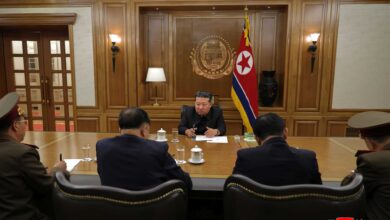On May 20, 2009, Kim Jong Il visited the then Taehung Youth Mine.
An official said that the mine completed the magnesia clinker production line in keeping with the actual conditions of the country.
Smiling happily, the General praised its achievement and said that it was precisely the Korean mode of production and Juche-oriented industry.
He continued: The mine has established the Juche orientation in the production of fireproof materials and this can be called a revolution. It is a great achievement that has brought about an epochal turn in developing our industry. It is as significant as the success in a nuclear test. President Kim Il Sung would be very pleased if he could see this.
The General stood quiet as if he was yearning for the President who had been so much concerned about the domestic production of fireproof materials.
He resumed after some minutes: The workers of the Taehung Youth Mine are adding brilliance to the President’s revolutionary ideology, the Juche idea, not in words but through hard struggle. They have demonstrated its validity and vitality. They are laudable, indeed.
Praising that the designers, technicians and workers who had been involved in the production of fireproof materials were all heroes, the General said:
“The Taehung Youth Mine should be renamed Taehung Youth Hero Mine.”
Looking at a map showing the production processes, he moved closer to it, still saying nothing.
All eyes were turned towards the map.
In front of the map the General reiterated that the workers of the mine had performed a great feat and said:
“As the workers are not here with me, I will pay my respect, as a token of admiration for them, to the map showing the fireproof materials production lines of our own style.”
He then made a bow to the map and the officials clapped their hands.

